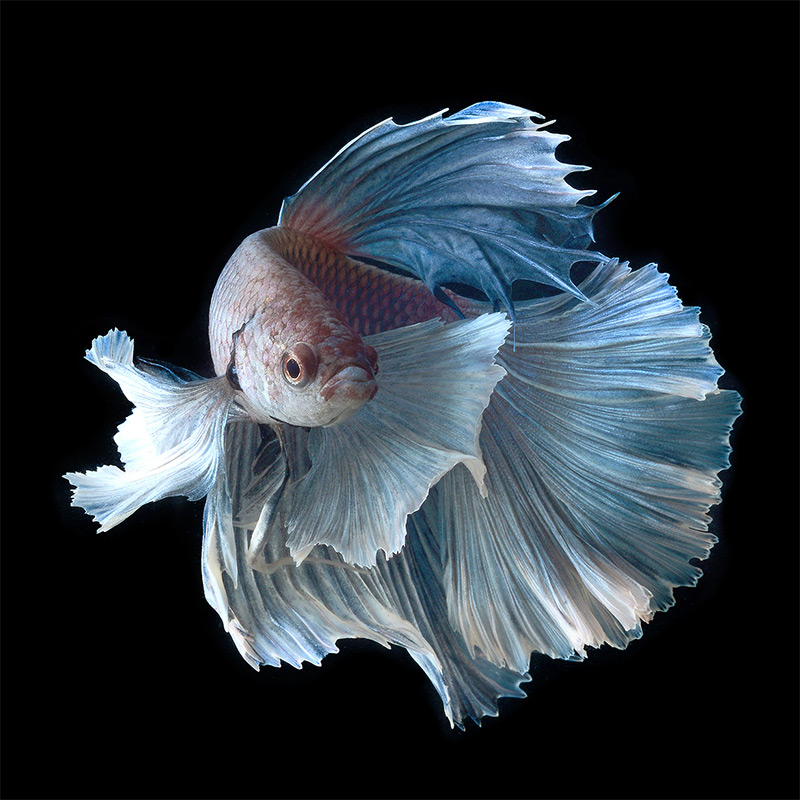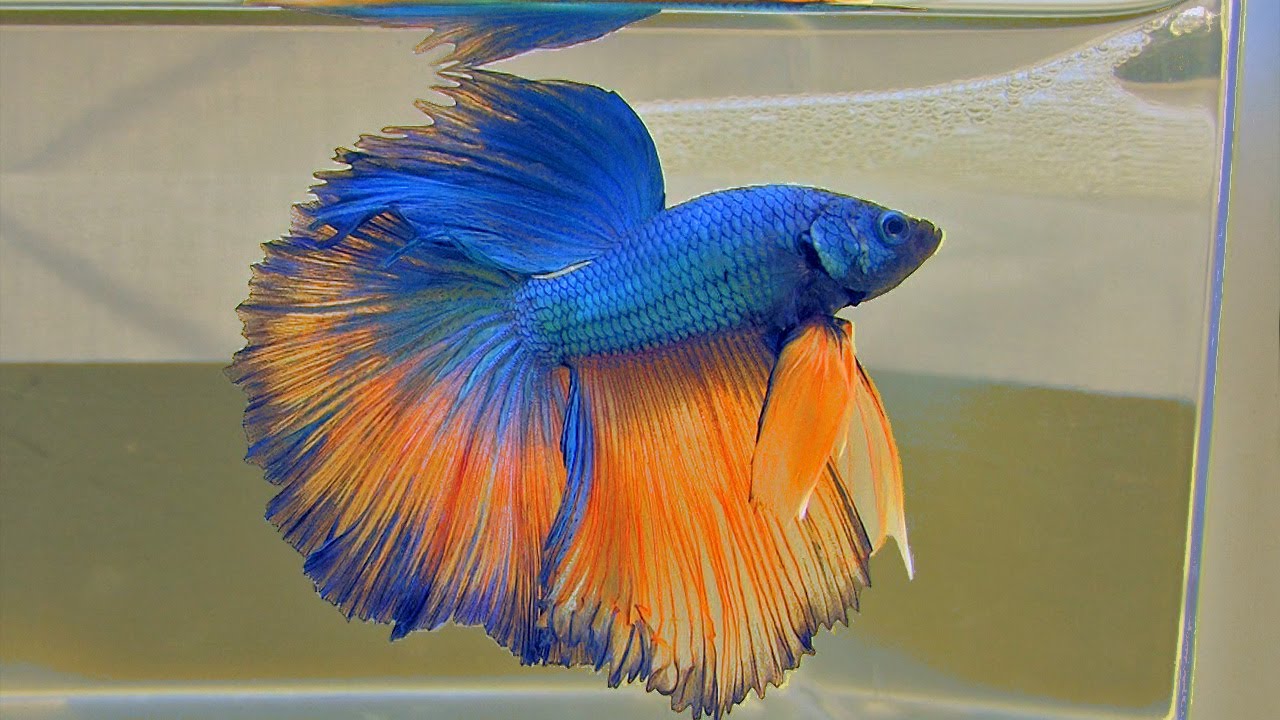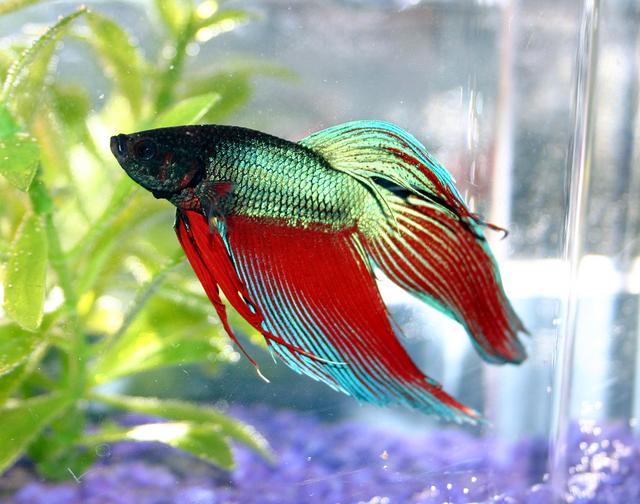
Betta splendens
FAMILY
Osphronemidae
TAXONOMY
Betta splendens Regan, 1910, Menam River [= Mae Nam Chao
Phraya], Thailand.
OTHER COMMON NAMES
English: Betta; French: Combatant, combattant du Siam; German:
Siamesischer Kampffisch; Spanish: Combatiente siamйs.
PHYSICAL CHARACTERISTICS
Up to 2.4 in (6 cm). Elongate cylindrical body, dorsal fin short
with one to two spines and seven to 10 soft rays. Anal fin is long
with two to five spines and 21–26 soft rays, caudal fin rounded.
First soft ray of pelvic fin elongated. Sexually dimorphic; males
have larger fins and a brighter coloration, females less conspicuously
colored. Wild type with bluish body and blue and red fins.
Two vertical iridescent marks on the opercle. Some breeds with
greatly enlarged fins (sail fin) and different colors or combinations
thereof, some almost completely red, blue, yellow, or black.
DISTRIBUTION
The original
DISTRIBUTION
al range comprises the Chao Phraya
basin in Thailand and northernmost Malay Peninsula (north of
Isthmus of Kra). The species has been transported and released
in various countries in Southeast Asia, and can now be found
even in the Dominican Republic, Colombia, Brazil, and
Florida, in the United States.
HABITAT
Tolerates a wide range of water parameters. Common in stagnant
or standing water bodies with dense aquatic vegetation,
especially in rice paddies and in canals. May dig into the mud
when the water recedes and survive weeks in a small cocoonlike
structure made of mud and probably mucus.
BEHAVIOR
This species is well known for its prominently developed aggressive
BEHAVIOR
, especially against conspecific males. Confined
to small tanks, males fight until one of them is killed. In
Thailand, various breeds of Betta splendens are used in popular
fighting matches in which people bet on the outcome.
FEEDING ECOLOGY AND DIET
Carnivorous, feeding mostly on small aquatic invertebrates,
such as zooplankton and insect larvae.
REPRODUCTIVE BIOLOGY
The male constructs a bubble nest and aggressively defends the
territory around it. Has typical spawning clasp. After the
spawning claps, male and female show spawning rigor, from
which the male recovers earlier (after 4 s) than the female (after
about 20 s). Up to 400 spherical eggs with a diameter of
0.04 in–0.05 in (1–1.4 mm) are laid per spawning sequence.
They contain no oil globule and sink toward the bottom.
While eggs are sinking they are collected by the male, later
joined by the female, and stored in the nest. Hatching takes
place after 32 to 35 hours at 84.2°F (29°C). Larvae swim free
on the fourth day.
CONSERVATION STATUS
Not listed by the IUCN.
SIGNIFICANCE TO HUMANS
Very popular aquarium fish. Because of its hardy nature, often
among the first species of freshwater fishes kept by beginners
to the aquarium hobby. Of no interest to fisheries due to its
small size.
Photo Gallery of - Siamese fighting fish





 Animalia Life
Animalia Life